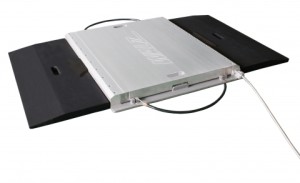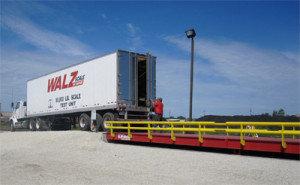Pinpoint the Perfect Truck Scale for Your Payload Operations
Looking for a truck scale that will suit your payload weighing operation while providing years of reliable performance? Determining payload weight is vital for to accurately calculate load values, improve the longevity of equipment, and in some cases avoiding overload fines.
Operators can determine payload weight by using different types of truck scales, including on-board truck scales, portable truck scales, and weighbridge truck scales. There are advantages to each, as well as a few drawbacks. Having a detailed understanding of the features and benefits of each type of truck scale will help you make an informed decision that minimizes your operating costs while maximizing efficiency.
On-board Truck Scales
On-board scales offer the convenience of allowing operators to determine load weight directly from the vehicle, saving the expense of having to visit a designated weigh station or truck scale site. There are four basic types of on-board scales for trucks: 
- Load cell scales, used for vehicles with spring suspension
- Air-suspension PSI gauges, used for approximate weights of commercial trucks and semis
- Air-suspension load scales, which precisely measure on-the-ground weight
- Electronic scales with PSI sensors, which gives approximate axle weight or gross vehicle weight by measuring pressure and temperature changes in the vehicle’s air suspension
On-board truck scales are installed either as original equipment or aftermarket products, and increases vehicle function. Many on-board truck scales are compatible with satellite and GPS technology, allowing you to more easily measure and control the weights of your vehicles.
However, each vehicle must be fitted with a separate system, which can increases costs for businesses requiring multiple vehicles. See one of the industry’s more impressive displays of on-board scale applications, and check out Walz On-board Truck Scales.
Portable Truck Scales 
Portable truck scales are the most common solution for weighing long-distance or multiple-site vehicles, allowing the driver to spot-check the vehicle even under less-than-optimal circumstances. This is the most cost-effective method for two-axled vehicles, or for infrequent weighing.
Portable truck scales can carry the risk of inaccuracy where the risk of transfer (the shift in center of gravity) is greatest, which can mean that a loaded vehicle that would pass weight restrictions with a different weighing method might register as illegal when weighed with portable truck scales. Fortunately, portable truck scale suppliers like Payload Pros have designed portable weigh scales to mitigate these potential risks of inaccurate readings.
Weighbridge Truck Scales
Weighbridge truck scales weigh the entire vehicle and its load. Often mounted on a concrete foundation, this type of scale measures the weight of the vehicle when empty and again when loaded. A moveable weighbridge can be surface mounted with a non-skid ramp, or pit mounted so the weighing surface remains at the same level as the road. 
Most weighbridges are connected to a computer installed with truck scale software, which prints weigh tickets. Full length weighbridges tend to be the most accurate for gross vehicle weights, but are expensive to buy and install. Partial-length truck scale weighbridges are an affordable alternative for tractor trailers, provided the weighing surface is firm and level.
When choosing the type of truck scales to use for your operation, keep in mind the type of vehicle to be weighed, the frequency and location(s) of the weighing expected, and whether you’re more concerned with the axle or the gross weight. Some suppliers provide truck scale rental programs which would enable you to try before you buy.
By considering these against the level of accuracy required, expected maintenance, and of course the price, you’ll be able to make the selection that’s best for your vehicle operation, safety, and your bottom line.